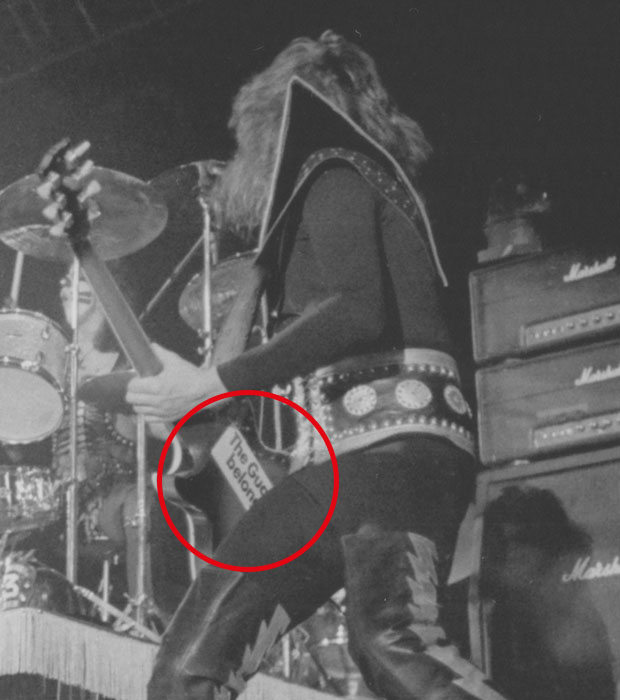
In Concert taping February 21, 1974.
Unknown photographer
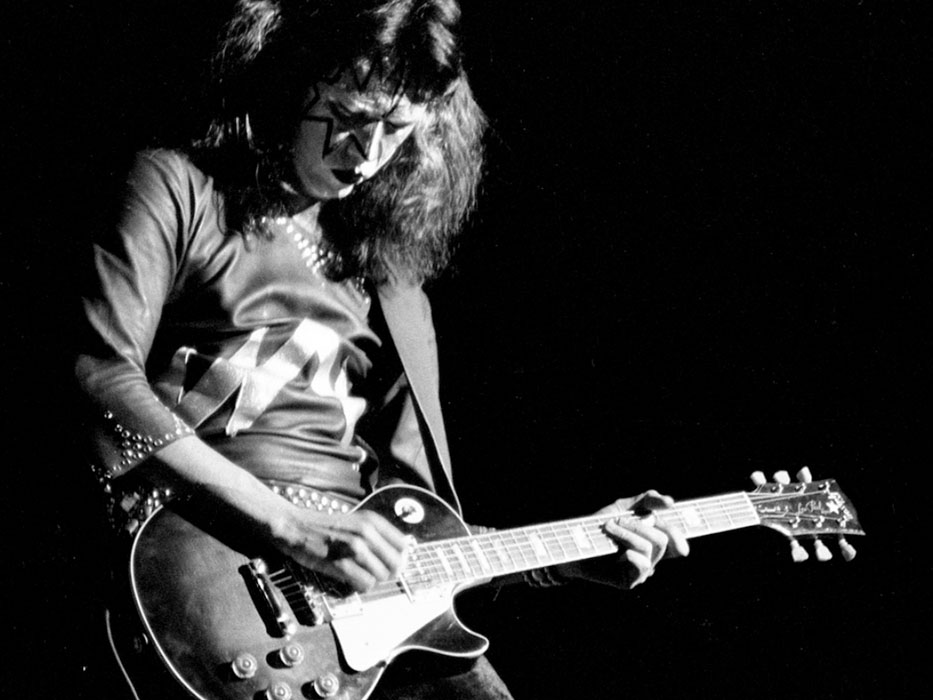
With the heel carved to his satisfaction, Ace kept the Deluxe in more or less the same condition for the first half of 1974. The only part of the guitar that would go through any changes was the headstock. Let's look at the simple stuff first. Some time between the taping of In Concert in late February and the band's return to the Academy of Music in late March, Ace added a small star decal to the headstock. This would stay on the Deluxe until it was retired and allows us to distinguish this original Deluxe from a later addition to the arsenal. (There is a much better photo of the star decal placement further down.)


The second change also affected the headstock and it's slightly more subtle (and variable). Ace wanted a Les Paul Custom, possibly influenced by the black three-pickup Les Paul Custom Eric Clapton played. That was the look he wanted and later in his career he would transition to Customs and never look back. But in late 1973 he couldn't afford a Les Paul Custom so he "made do" with the Les Paul Deluxe. But he could try to make that Deluxe look more like a Custom and the simplest way to do that was to fake some binding on the headstock. Below we see how the Deluxe headstock looked initially.


Some time between January 8 and January 26, Ace set out to carve away at the outline of the headstock to create a faux binding look. (I have this image in my head of how he was carving the heel and suddenly thought, "Hey! I can do this on the headstock too!") Looking at the photos below and comparing them to the ones above you can see that there is a light-ish outline on the headstock. It doesn't look like actual binding but rather like exposed wood, one can compare the two in the photo from Long Beach.
The problem with this headstock binding modification is that it's hard to spot as it looks very different depending on the lighting conditions. Case in point are the two photos below. These are both taken by Charlie Auringer during the same show and one can pick and choose which one to focus on to argue for or against the prescence of the faux headstock binding.
There are some later photos that might possibly suggest that Ace possibly "colored" the faux binding with a silver pen or something similar but I don't think the evidence is strong enough to say either way. Pending better photos I'll leave that possibility aside. This basic look of the Deluxe, with star decal, faux binding, chrome pickup covers, and the original pickguard is the one we see throughout the spring and summer 1974. The examples below cover this period nicely.
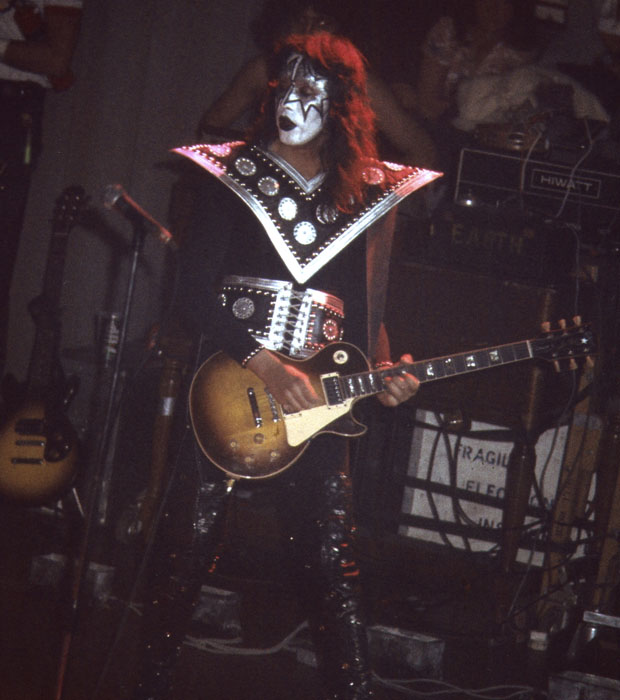


We don't know exactly when the next modification of the Deluxe happens but it's some time between July 18 and September 16. Ace simply removed the original pickguard and replaced the pickups. Since the humbuckers in the Deluxe were there when Ace bought it we don't know what they were but an educated guess is that they were regular Gibson PAFs. In September 1974 Ace removed those and put in DiMarzio Super Distorsion pickup (DP100) in the bridge position and probably a DiMarzio PAF (DP103) in the neck position.



Now, this isn't an actual modification to the Deluxe but it happens so we might as well cover it. Some time in late October or very early November Ace starts stringing differently. The available photos from October generally don't show much detail and don't have enough clarity to show whether this change appears earlier, but Bill Parson's shot from November 7 shows that, quite unlike earlier in the year, Ace has started top-wrapping his strings.



Early November also saw a couple of other modifications. Buckle up, because now things really start happening. Up until late October Ace had used the original strap buttons and the last good look at that is from East Lansing on October 21. By November 7 in St. Louis he had the strap button relocated to the back of the heel as seen in the photo below. Look closely at that November 7 photo and you'll see the hole where the original strap button was screwed in.

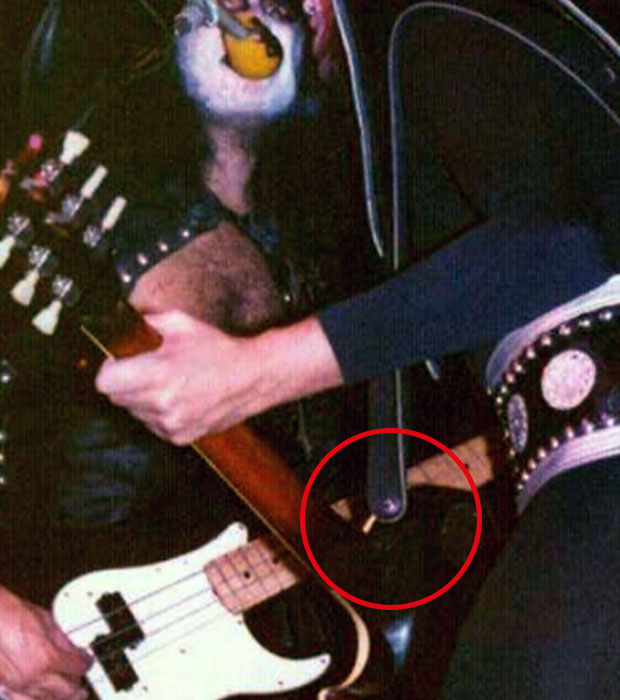

Mid-October also saw the addition of Ace's first special effect. I say mid-October but I actually think this was added earlier. I think there is something on the back of the headstock in both the September 28 and October 4 photos below but it doesn't really get incontrovertible until October 21. On the back of the headstock are two small sheet metal u-shaped spring clips. As is usually the case these are very hard to spot. First, Ace has to have his back turned to the photographer and second, the focus on the headstock has to be at least decent. For obvious reasons most photographers will not focus on the back of the headstock of a guitar.
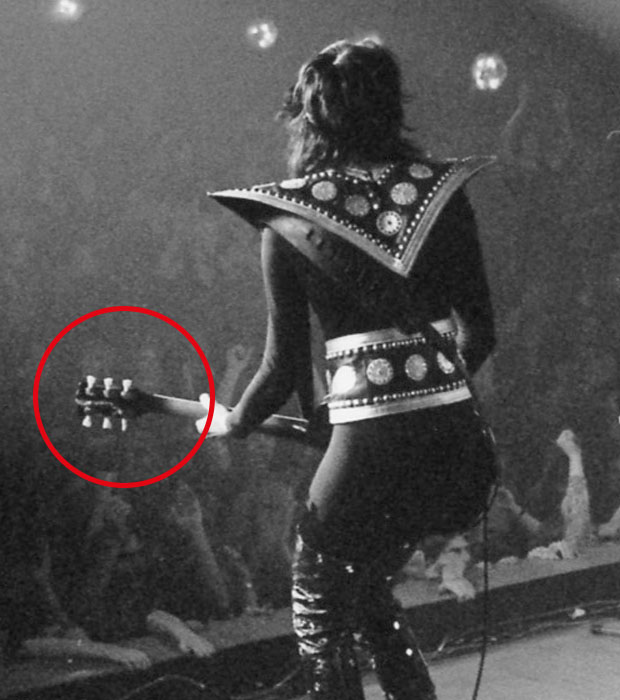
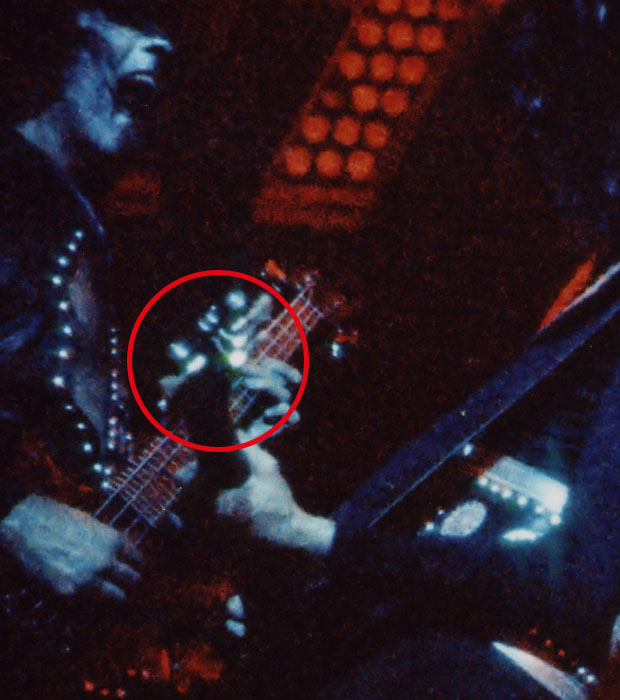

So what were those spring clips for? Ace's "rocket launcher". Photos of this contraption are even more scarce. The same problems noted above apply but these are compounded by the fact that this part was only added for a specific part of the show. So far I've only seen the "rocket launcher" actually in place in one set of photos, the ones shown below. That is a pretty serious contraption in the first photo and if you look closely at the other two photos you can see how wide the diameter of the "rocket launcher" tube was. (You can kind of see the effect during Ace's guitar solo from the Winterland show.)



As if all this wasn't enough, in late December 1974 Ace added a little quirk. Again, this isn't exactly a modification of the guitar as such—but then again, the same can be said about the "rocket launcher"—it was, however, an interesting detail. When KISS played the National Guard Armory in La Porte, Indiana, Ace availed himself of a Coast Guard bumber sticker and stuck it on the back of his Deluxe. Since KISS had a couple of choreographed moves where Ace faced "away" from his side of the stage, if the photographer had the right spot in the photo pit they could often capture the back of Ace's guitar. Consequently we have a decent amount of photos of when the bumper sticker was on there.


